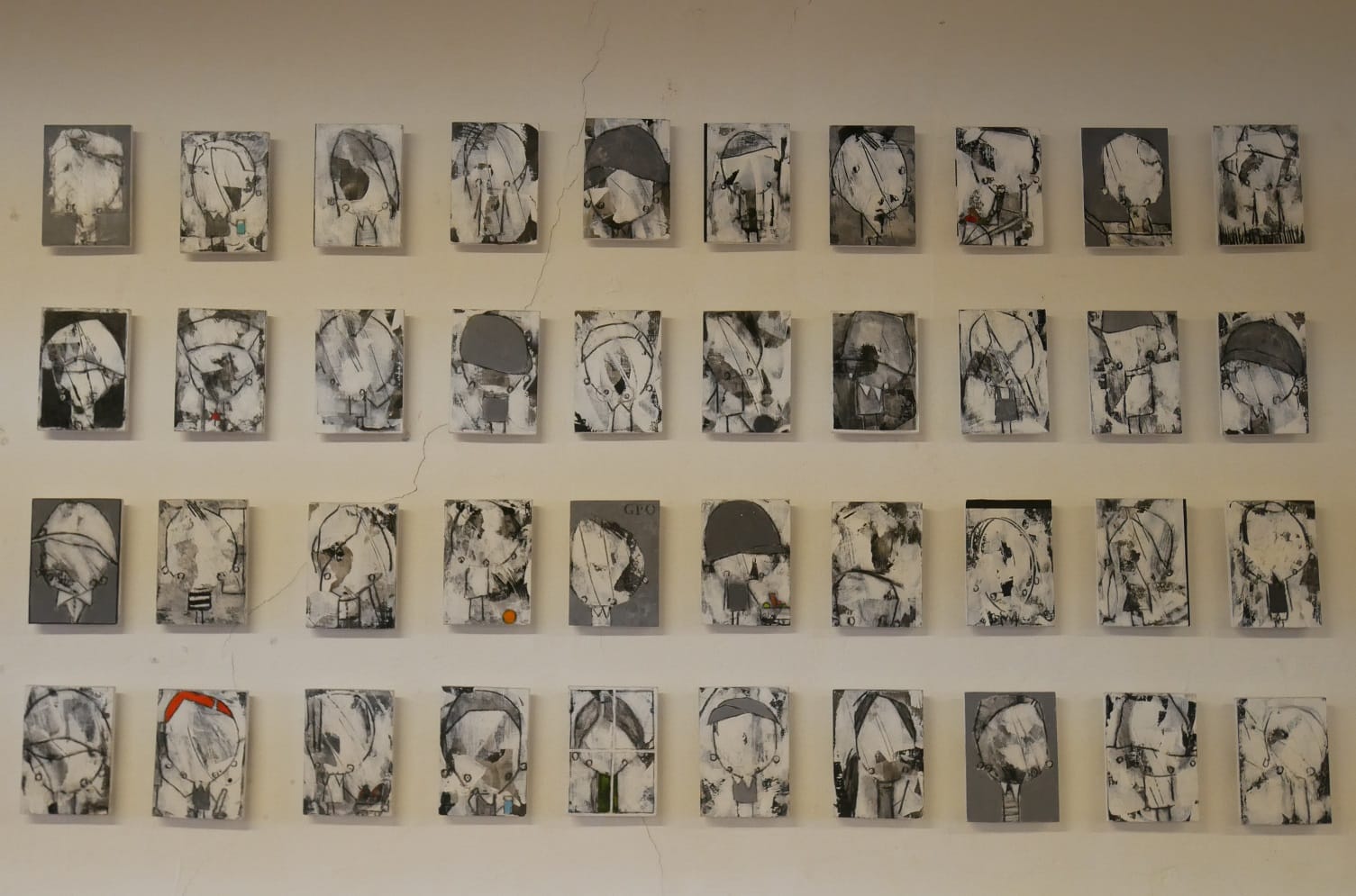From a Dublin base, an anti-caste influencer grows a global audience
In less than two years, Amit Wasnik has attracted tens of thousands of online followers with his posts focused on the life and ideas of BR Ambedkar.
In her city-centre studio, Kelly Ratchford is putting together works for new exhibitions, with some sadness and some humour.

Artist Kelly Ratchford pulls back a plastic sheet to reveal 110 matchboxes, each decorated with the outline of a textured cartoonish figure in muted greys, black and white.
Canvases are propped against the walls of her studio on an upper floor of the Olivier Cornet Gallery off Parnell Square. Tins of paint are piled on the floor.
Ratchford’s is working on a series called “No Such Thing as Society”, she says. Like the Margaret Thatcher quotation.
“That phrase, that quote from her, it always struck me as so wrong,” says Ratchford, on a Zoom call. “It is a fingers-up to her and her outlook on society.”
In a 1987 interview with Woman’s Own magazine, the then British prime minister said too many people were turning to the government to solve their problems. “They are casting their problems on society and who is society? There is no such thing!” she said.
There is a lot of conflict in society at the moment, whether violence and political instability in the United States, or closer to home in Dublin, says Ratchford. But “there are communities everywhere”.
Painted matchboxes in the series she is working on symbolise the vulnerability of society and community, she says. “It’s flammable, it could go up in the air,” says Ratchford, flicking her fingers to indicate an explosion.
“But it’s also a series of people together, kind of like in a block of flats, or a high rise,” she says. Those places often tend to have a strong sense of community, she says.
Her paintings appear at first like childlike drawings, but many of the faces portray strong emotions like fear, anger and sadness.
On one wall in her gallery is a grid of 40 small paintings.
A few years ago, Ratchford read radio-icon Joe Duffy’s book about the children who died in the 1916 Rising.
In Children of the Rising: The Untold Story of the Young Lives Lost During Easter 1916, Duffy sets out what he uncovered about the 40 children who died.
For some he discovered their names, where they had lived, how they died and their family backgrounds.

Ratchford recalls walking to her studio not far from Parnell Square after reading the book. Local streets took on new meaning.
“Oh, my God, that’s where that happened,” she says. “That’s where the little boy was shot.”
Many of the children who died in 1916 were from those streets too – working-class kids from the inner-city.
“It is a bit of a romanticisation,” she says, but the book left her with an image of industrious kids, running around the city, making a bit of trouble.
In 2016, she painted a series depicting the children.
Another of Ratchford’s series, this one currently on display as a virtual exhibition in the Olivier Cornet Gallery, is The Covidians, which tackles the experience of isolation and loneliness under the Covid-19 restrictions.
During lockdown in spring 2020, Ratchford visited her parents back home in Canada.
She began to sketch figures and share them on social media, she says.
People told her she was capturing the tone of a Covid-19 lockdown, she says. “In the beginning it was all about being very afraid, kind of hunkering down and just kind of wanting to protect ourselves.”
She started to work seriously on The Covidians then. The portraits are of unhappy, masked characters, painted on small pieces of wood. They look sad, isolated, scared or angry.
They reflect life in 2020, restrictions and lockdowns, the shared and universal feelings of isolation and loneliness.
“I hope that my art can evoke something,” she says. “But then hopefully, sometimes a bit of fun, a bit of humour too.”
She’s another exhibition coming soon too. Jam Havoc is due to run for a month from 14 March and should display a bit more of Ratchford’s fun side, she says.
That will likely start as a virtual exhibition too. But she hopes restrictions might ease in April to allow viewing by appointment, she says.
Jam Havoc is set to be a joint exhibition between Ratchford and jewellery artist Jaki Coffey.
Coffey makes “art jewellery”, says Ratchford. “She makes things that are wearable.”
Coffey was inspired by her young daughter making fingerprints with butter, says Ratchford.
Ratchford is working on a series of paintings for that show. She is using collage too, she says. She turns the camera around to show a character with a pink Polly Pocket stuck on for clothes.
“I also like the juxtaposition of things that shouldn’t be, you know, you are not supposed to use those things in a painting,” she says.
Jam Havoc will be more upbeat than The Covidians. A step away from “focusing on the negative or the intense feelings”, she says.
Friends are surprised that so much of her work is sad, she says because she’s generally a positive person.
But she’s drawn to exploring the complexity of the human condition in her work, she says. “Abstract art can evoke something really powerful.”
Not everyone agrees, she says, laughing. “I have an uncle who can’t believe that people buy my work, because it’s like, well a child could do it.”
“On the surface you can just take it as a very simple line drawing,” she says. “But if you want to take it farther, it can evoke something else.”